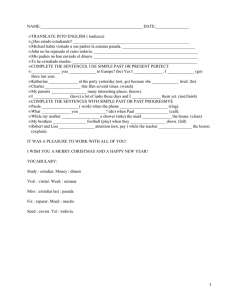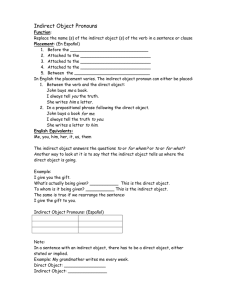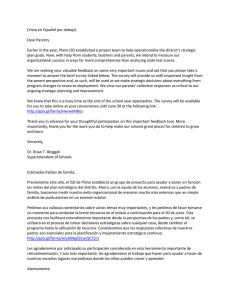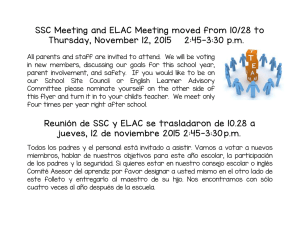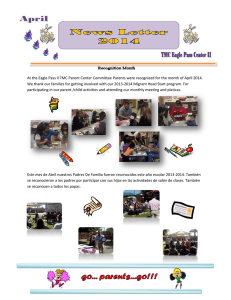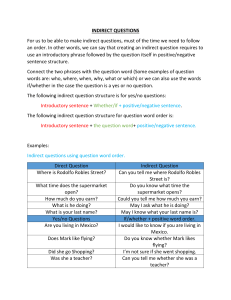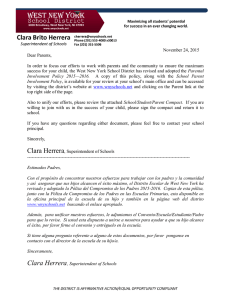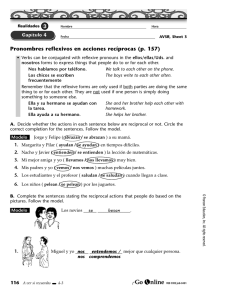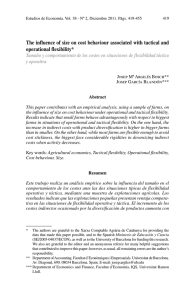Indirect Object Pronouns
Anuncio
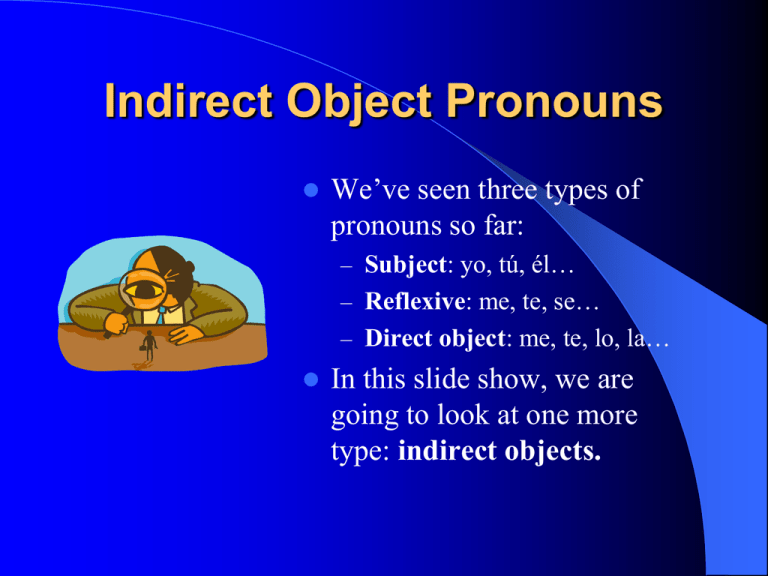
Indirect Object Pronouns We’ve seen three types of pronouns so far: – Subject: yo, tú, él… – Reflexive: me, te, se… – Direct object: me, te, lo, la… In this slide show, we are going to look at one more type: indirect objects. What’s an indirect object? Complete these sentences: – The teacher gave ___ an A. – Bill Gates sent ___ a million dollars. – My parents bought ___ a used car. – Julia told ___ the big secret. So tell me the answer! Did you say something like: – The teacher gave you an A. – Bill Gates sent me a million dollars. – My parents bought my little sister a used car. – Julia told everyone the big secret. Indirect objects The indirect objects in these sentences are the people who received something: you, me, my little sister, everyone. The first two objects use pronouns – you, me. Can you guess what the Spanish equivalents are? That’s right! me > me you > te The second pair of objects can be replaced with pronouns – her, them. What are the Spanish equivalents? Hmm, this looks familiar! her > le them > les We’ve seen this form before when we looked at gusta. Some common verbs Indirect objects are used together with verbs such as: – Dar (give) – Enviar (send) – Comprar (buy) – Mandar (send) – Decir (tell) – Regalar (give a gift) Here are the forms! The “indirect objects” are: – me > me – te > you – le > him, her, “Ud.” – nos > us – les > them, “Uds.” ¡Vamos a practicar! Complete each sentence with an appropriate indirect object pronoun. The recipient for each sentence is provided. [Recipient: me] Mis padres ___ enviaron (sent) $100 para comprar un vestido nuevo. Mis padres me enviaron (sent) $100 para comprar un vestido nuevo. Remember to place all objects before a one-word verb form. Otro, por favor. [Recipient: you] ¿ ___ enviaron tus padres dinero también? ¿ Te enviaron tus padres dinero también? What if there is more than one of “you” ? ¿ Les enviaron sus padres dinero también? Use the “Uds.” form! Muy bien. [Recipient: her] Diego ___ compró un anillo (ring) a Luisa. Diego le compró un anillo (ring) a Luisa. Can you give us another? [Recipient: us] La profesora de antropología ___ da mucha tarea. La profesora de antropología nos da mucha tarea. Double trouble. In all of the examples, there are two objects. That is, someone is giving something to someone. The something is the direct object and the someone (the recipient) is the indirect object). Say what? Look at the first examples and identify the objects: The teacher gave you an A. – Recipient: you – Thing received: an A Bill Gates sent me a million dollars. – Recipient: me – Thing received: a million dollars My parents bought my little sister a used car. – Recipient: my little sister – Thing received: a used car Double objects We can simplify each sentence if we already know what the objects refer to. Look at this passage: My little sister got a new apartment across town, but there is no bus service. She saw a used car she liked a lot, but she didn’t have a lot of money. My parents bought it for her. Let’s take a closer My parents bought it for her. The expression in red is the indirect object (the recipient) and the word in yellow is the direct object. Both are pronouns. What about in Spanish? We can do the same thing in Spanish: Tengo que comprar un libro para la clase de historia, pero no tengo dinero. Mis padres me lo van a enviar por Western Union. – Recipient: me – Thing received: lo (el dinero) I do! Mis padres me lo van a enviar por Western Union. Note that the indirect object precedes the direct object. Think “indirect, direct object”: I DO. L+L=S+L No, it’s not algebra class! There is a special rule about double object pronouns that you will need to know: if a sentence has two objects that both start with L, the first one changes to SE. An example, please. Sure! Let’s simplify this sentence: Yo envié una carta a mi hermano. You could say either: – Yo le envié una carta. … or: – Yo la envié a mi hermano. But you could also say: – Yo se la envié. – Note how the “le” changes to “se”; you can’t say “le la” because both objects start with an “l.” Let’s practice a few! El director dio un mensaje (message) a la secretaria. El director ___ ___ dio. El director se lo dio. – Lo = el mensaje – Se = a la secretaria ¡Otro, por favor! Carmen envió unas cajas de ropa a su hija. Carmen ___ ___ envió. Carmen se las envió. – Las = las cajas – Se = a su hija Uno más y acabamos. Mis padres regalaron unos cheques a mi hermana. Mis padres ___ __ regalaron. Mis padres se los regalaron. – Los = unos cheques – Se = a mi hermana (not “me) ¡Ya está! To summarize, here are the four forms you will need for Spanish 1010-1020: Subject yo tú él ella Ud. nosotros ellos ellas Reflexive me te se se se nos se se Direct object me te lo la lo, la nos los las Indirect object me te le le le nos les les
